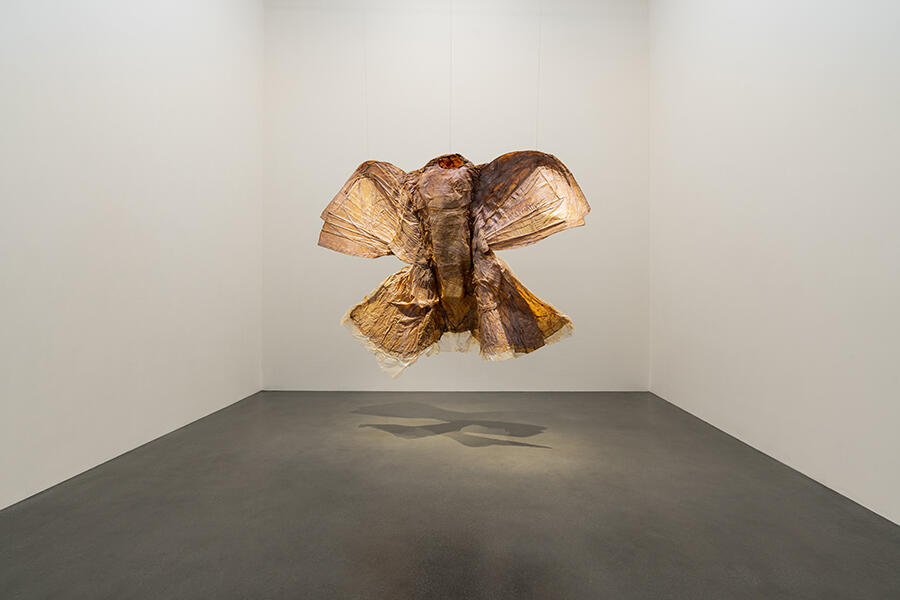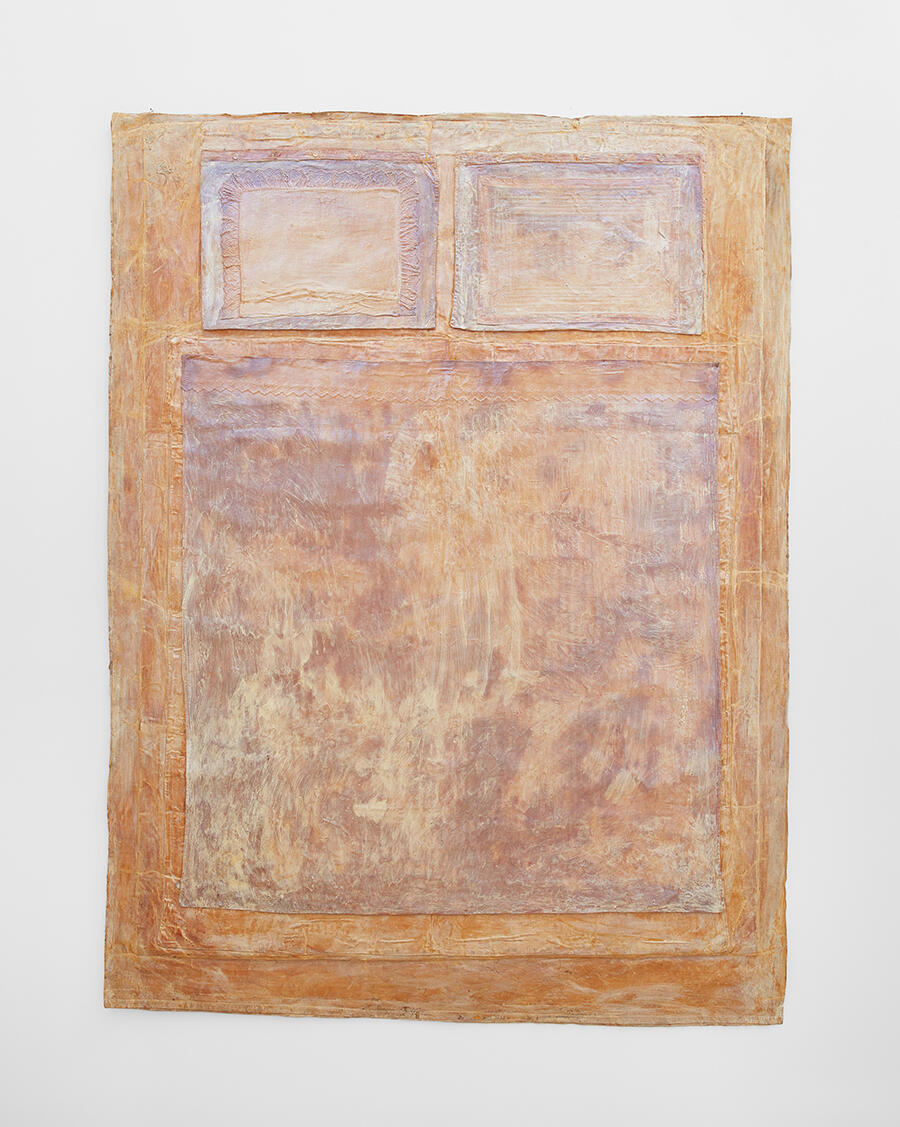Heidi Bucher Skins Tradition
At Muzeum Susch, a posthumous retrospective showcases the artist’s liberating use of latex
At Muzeum Susch, a posthumous retrospective showcases the artist’s liberating use of latex

After a two-year larval development in water and a two-hour metamorphosis, during which the nymph emerges from its exoskeleton, the dragonfly is ready to fly. Humans, too, cyclically change their skin as their bodies shapeshift: every 14–21 days during youth; up to 60–90 days in old age. For both species, shedding their old shell is a condition for existence. In her manifesto ‘Parkettlibelle’ (Parquet Dragonfly, undated), artist Heidi Bucher compares the natural stiffening of the dragonfly’s iridescent wings with the formation of human selves and identities. In 1973, the artist had her own professional transformation when she separated from her husband and returned from California – where she had become acquainted with minimalism and the feminist art project Womanhouse – to her native Switzerland. It was there that she began to wrap architectural and human bodies in new skins made of latex, her signature material, only to strip them bare.

Bucher’s richly articulated retrospective ‘Metamorphoses’, curated by Jana Baumann, was first shown at Munich’s Haus der Kunst before being presented in two complementary parts in Switzerland: the first at Kunsthalle Bern and the second at Muzeum Susch. In Susch, where the museum occupies an old monastic brewery carved out of mountain rock, the intimate size of many rooms allows for close encounters with the more than 70 works exhibited. The selection includes several installations, sculptures and works on paper, plus sketches, archival photos and newly restored films, such as Skinning of Gentlemen’s Study (1978) and Skinning of Small Glass Portal (1988), which shows the artist energetically peeling off the thick layers of gauze and latex she has applied to different surfaces, similar to the strappo technique. After drying, Bucher would hang those negative imprints in their original position, as if to reconstruct the room, but also to let it ‘fly. It must get away, far away from reality’, as she explained in a 1978 interview with her son Indigo, quoted in the exhibition’s excellent catalogue.

Two showstoppers, to me, best represent turning points in Bucher’s research: on the first floor, Dragonfly Lust (Costume) from 1976 is a suspended, pearlescent body sculpture fashioned out of different skinnings, often worn by the artist. It marks the convergence between her liberating ability to re-inhabit architecture and memories, and a cycle of early works related to textiles and fabrics, in which she addressed the crystallized roles assigned to the female body within conservative domestic environments by embalming old blankets, pillows, gowns and corsets belonging to her own family with latex and mother-of-pearl pigments (The Bed, 1975; Sunday’s Apron, 1978; Anna with Herself, 1978). On the ground floor, the series of skinnings from the abandoned Bellevue Sanatorium on Lake Constance – including The Audience Room of Doctor Binswanger (1988), a colleague of Sigmund Freud renowned for his treatment of female hysteria – documents the expanded scope of her enquiry into enclosures and confinement, after initially focussing on the houses of her deceased parents (Gentlemen’s Study, 1978) and grandparents (Floor Skin, 1980), to encompass public institutions.

In a country where women only gained the right to vote in 1971, this shift can be seen as a political one. In 1983, on the occasion of the triennial exhibition ‘La femme et l’art’, which only featured woman artists, Bucher orchestrated the durational performance The Hatching Act of the Parquet Dragonfly (1983). A quintet of female performers first skinned a cell of the former castle prison and then their own bodies, clad in long-sleeved men’s underwear. On the following day, they carried the rolled-up latex in a procession across the city; the action ended at the town hall, where they shed their restrictive armour and walked away, naked and free.
Heidi Bucher’s ‘Metamorphoses’ is on view at Muzeum Susch, Zernez, until 4 December 2022.























